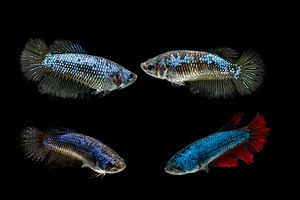Both new and expert fish owners find themselves asking questions about betta fish at one point or another. These beautiful swimmers can draw in attention with their shimmering scales and flowing tails.
Because these fish are extremely territorial, you may be wondering if you can put more than one betta in a tank. Here are the fast facts you need to know before heading to your local fish store.
1. Fish Must Be Female
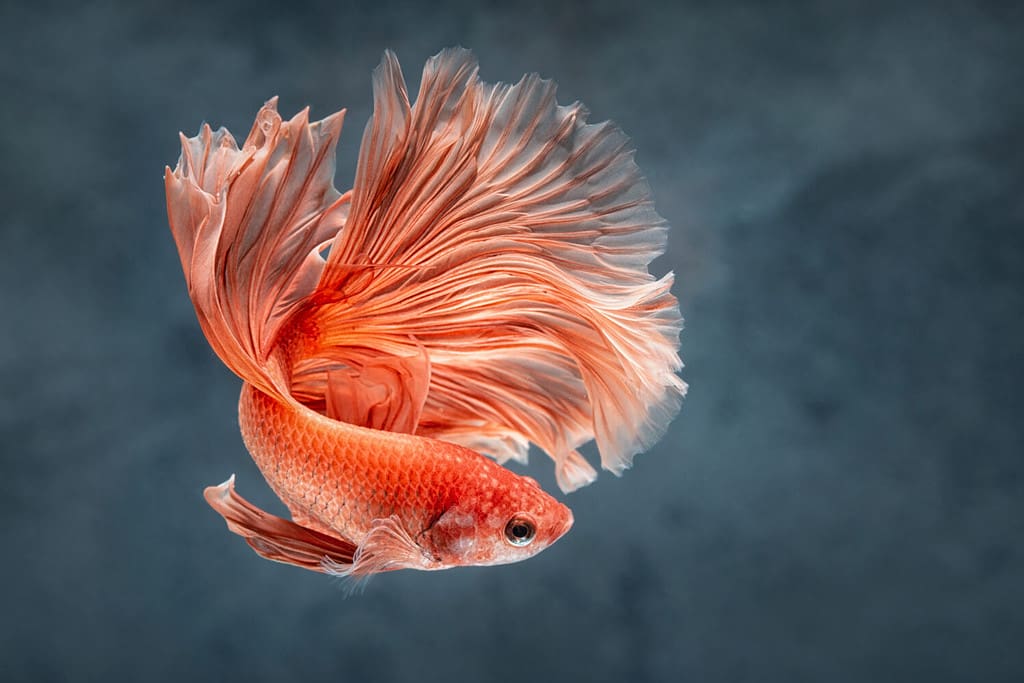
Male betta fish typically have long, showy tail fins.
©Hadrani Hasan/Shutterstock.com
If you plan to have more than one betta fish in a tank, make sure they’re both female. Male betta fish are wildly territorial. So much so that if they encounter another male, one will likely end up dead.
You can technically keep two male bettas in a tank together if there is a divider. It’s important to note that this can still cause immense stress in each animal. They’ll want to attack any male they see, even if there’s a divider between them.
If you’re starting with no betta fish, you actually have an advantage. When you’re at the pet store, take two female bettas and hold them next to each other. Watch for one to flare her gills. If one does, they would not make a good tank pairing, as this is a sign of aggression.
The more calm the two female bettas are with one another, the better they’ll do living together.
2. Make Their Tank Comfortable

Betta fish need a heater and spacious fish tanks to thrive.
©Sunny_Smile/Shutterstock.com
The majority of animals being adopted or bought need to feel safe in their new home and the same is true for fish. When setting up the tank for bettas, put a variety of plants and hiding areas for them.
Female bettas can get aggressive and will establish a hierarchy when multiple live in one tank. Adding plenty of plants and hiding spots gives each individual fish their space and a safe area to retreat if needed.
Another part of creating a comfortable environment is having the tank water between 76 and 78 degrees. The tank needs to be at least 25 gallons for the two female fish not to fight each other.
The less stressful their tank environment is, the better they’ll get along. Be sure to use filtered water and change it once a week.
3. Give Them a Proper Diet
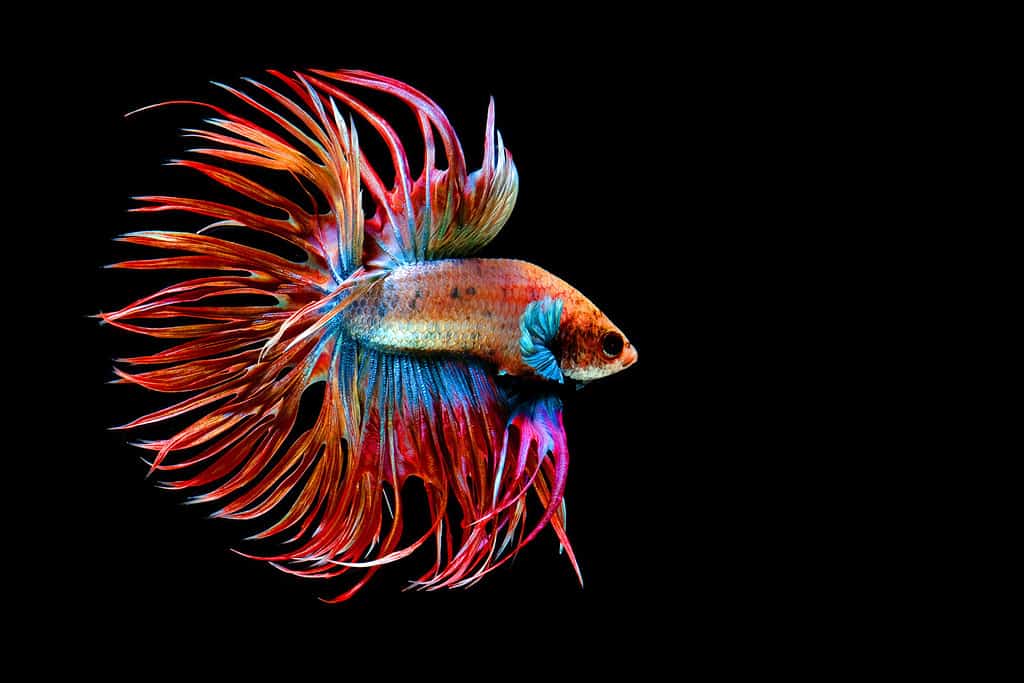
Betta fish love eating brine shrimp!
©Vilasack Southisane/Shutterstock.com
Have you ever heard the term “hangry?” When someone is hungry, they’re more likely to get angry and agitated easily. The same is true for betta fish! If they’re hungry enough, they’ll start nipping at each other’s tails!
Betta fish need to be fed once a day. They enjoy dry, frozen, and freeze-dried fish food. As with any pet, never overfeed them. Bettas have relatively small stomachs and don’t need much food at a time.
4. Monitor the Fish Tank
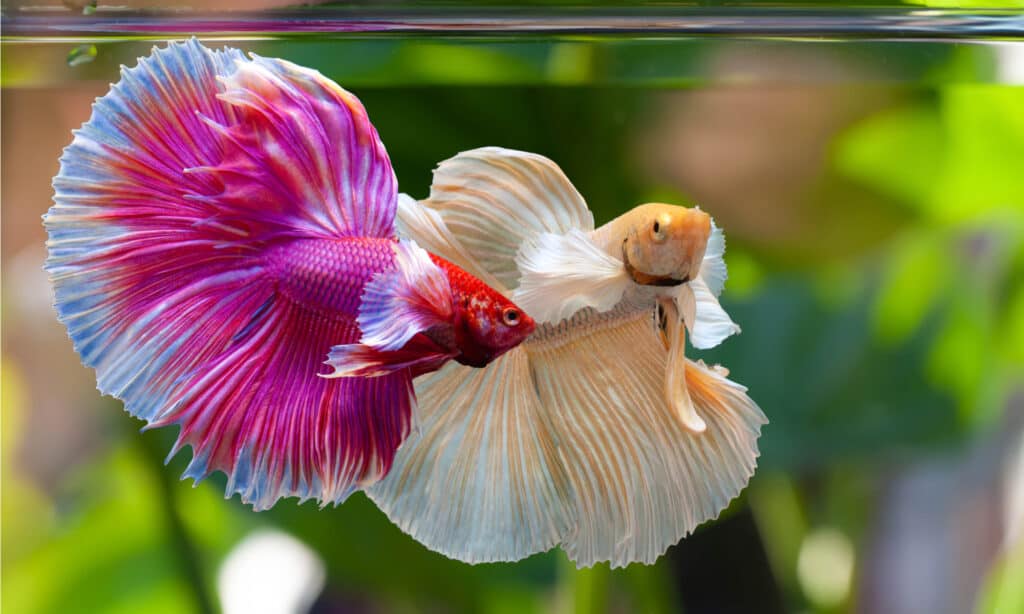
Regularly keep an eye on your fish’s fins to ensure no fighting is taking place.
©panpilai paipa/Shutterstock.com
More than one female betta fish together is called a sorority. If you have a sorority, be sure to monitor them closely. This is especially important when you first introduce them to one another.
Watch to see if one fish seems to be the bully. Keep an eye out for fading scale coloration, swimming toward the bottom of the tank, torn fins, and a fish that won’t eat during feeding time.
5. Add Other Fish to the Tank
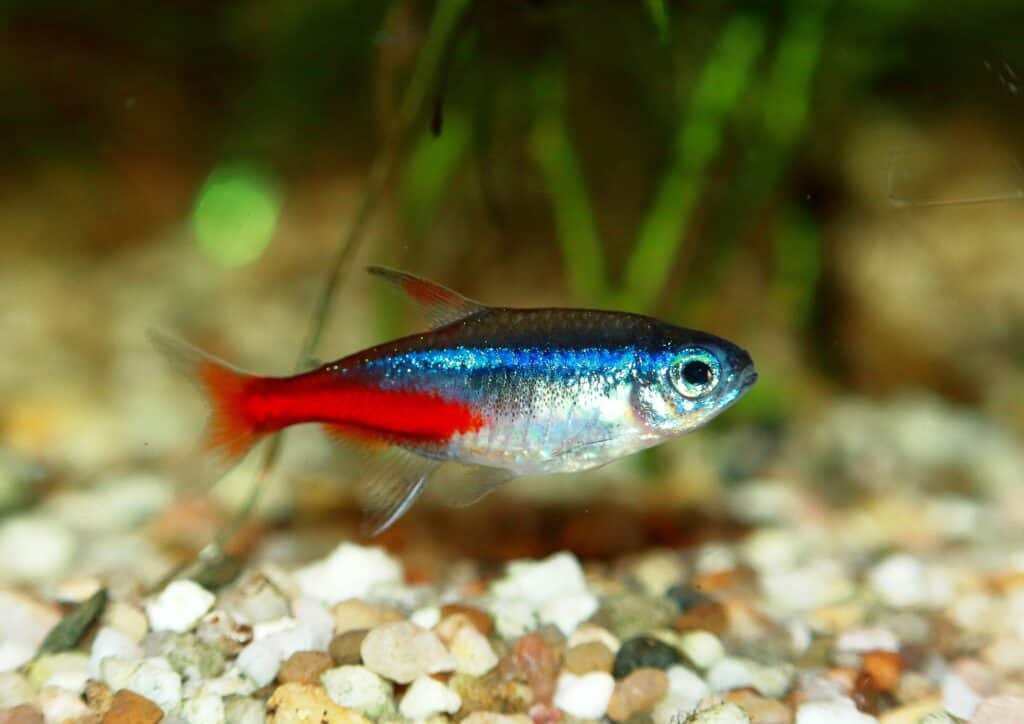
Neon tetra make great tank-mates with bettas.
©Kristiana Berzina/Shutterstock.com
It’s not the end of the world if you notice that one of your fish is particularly aggressive. A hack some fish experts use is adding what they call “filler fish” to a tank. These are typically small, swift fish that can get along with bettas.
They take up a bit of space in a tank which can keep aggressive betta fish calm. Neon tetras and female guppies are common choices for filler fish.
6. Have a Holding Tank Available

Have a second fish tank available in the event the bettas become territorial.
©CC BY-SA 4.0 – License
If at any point your sorority isn’t getting along, it’s a good idea to separate them temporarily. Having a second tank available for this is essential. As soon as you see the fish getting physical with one another, transfer some of the water from the primary tank to the holding tank.
Again, make sure they have plenty of hiding spots and fresh plants. Keep the fish separate for about two days and have the tanks near each other. Try to put them back together to see if the aggression has subsided.
If not, consider permanently keeping these fish separate.
Summary of Tips For Keeping Multiple Betta Fish in a Single Tank
| Tip # | Tip |
|---|---|
| 1. | Only female bettas can live together. |
| 2. | Create a homey tank. |
| 3. | Be sure to feed your fish enough. |
| 4. | Keep a close eye on how they interact. |
| 5. | Put filler fish in the tank to distract bettas. |
| 6. | Keep a quarantine tank available |
The photo featured at the top of this post is © ErwinGucci/Shutterstock.com
Thank you for reading! Have some feedback for us? Contact the AZ Animals editorial team.




